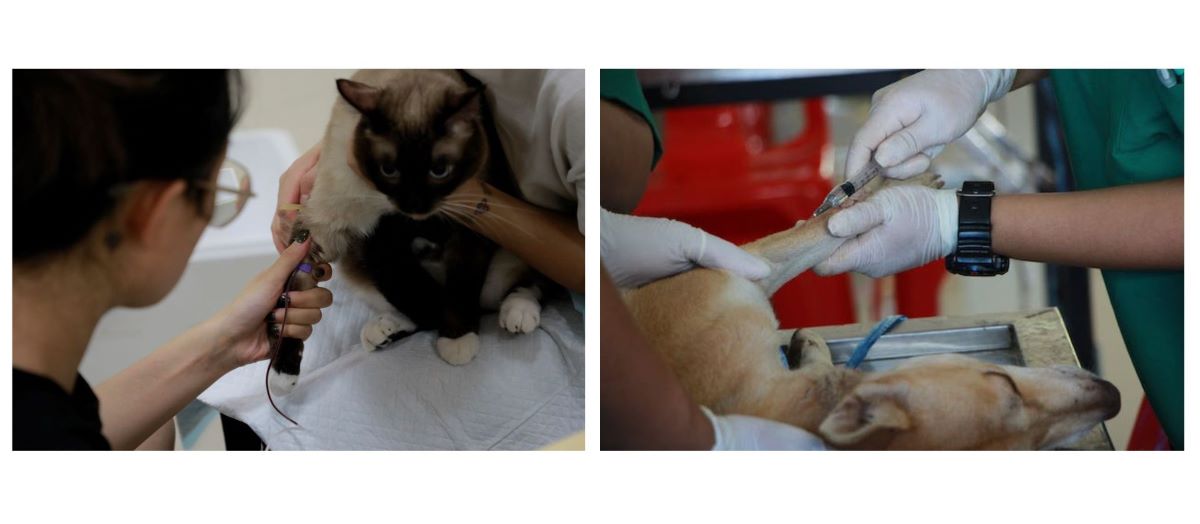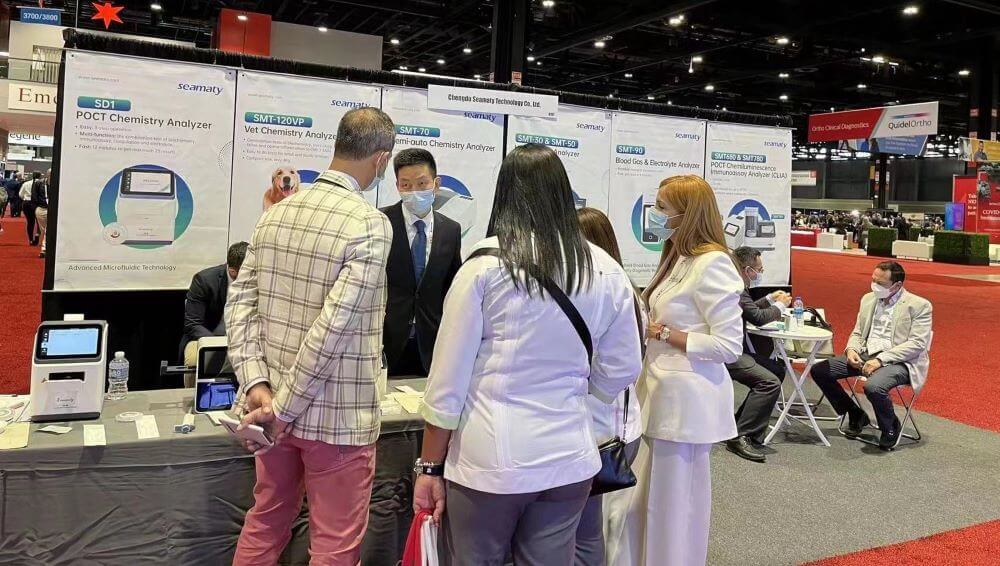With the use of various Point Of Care Testing technologies and testing instruments, POCT can be performed both in and out of the hospital. Some special tests can even be performed at home or in special settings (e.g. outdoors, on site), greatly facilitating the needs of patients and special populations. Here are 8 Examples of Point Of Care Testing.
1. POCT in Diabetes diagnosis and treatment
The use of various rapid blood glucose meters and non-invasive blood glucose testers has greatly reduced the reporting time (TAT). They are the most commonly used testing instruments in clinics and patients' homes.
-
a. Immunofluorescence testers detect indicators such as glycated hemoglobin and urinary microalbumin in diabetic patients. This helps in early detection of diabetic nephropathy and facilitates the estimation and long-term monitoring of the patient's condition.
-
b. Sensor-related test can detect indicators such as blood gas and electrolytes in patients. The dry chemistry analyzercan detect various biochemical indicators in the patient's blood.
2. POCT in Diagnosis of cardiovascular diseases
Acute Myocardial Infarction (AMI) has an acute onset and seriously affects the life safety of patients, the use of POCT can enable timely diagnosis and treatment of AMI patients.
-
a. Gold standard quantitative assay, full quantitative immunofluorescence assay and rapid CRP assay can detect specific serum early markers such as cTnl, Mb, CK-MB, D-dimer, BNP, CRP.
-
b. Prothrombin time (PT) measurement, activated partial thromboplastin time (APTT) measurement using dry film blood coagulation analyzer;
-
c. Dry chemistry analyzer to detect AST, LDH, CK and other biochemical indicators in blood;
-
d. Sensor-related analyzers can detect blood gas and electrolytes.
3. POCT in Infectious disease diagnosis
The use of protein chip technology, immunogold labeling technology related technology can enable the rapid detection of microorganisms in primary hospitals, private clinics and community health clinics that do not have the conditions for bacterial culture.
Point Of Care Testing can also be used for pre-surgical HBsAg, HCV, HIV, TP, screening for viral hepatitis before endoscopy, etc. in hospitals.
4. POCT in febrile diseases
The use of rapid CRP testing equipment, which combines the results of CRP and routine blood tests, is more specific than a single test for identifying the nature of the infecting agent (bacterial or viral) in febrile patients.
5. POCT in the ICU ward
In the ICU ward, the following have been used clinically:
-
a. Electrochemical sensors for in vitro monitoring
-
b. Patients' blood gases, electrolytes, red blood cell pressure and blood glucose can be controlled periodically
Biosensors for in vivo monitoring, which are mounted on the wall of a probe or catheter and placed in the lumen of an artery or vein, and the data of the index to be measured can be obtained periodically through a monitor.
6. POCT in Pediatric diagnosis and treatment
Suitable diagnostic behavior for children requires elements such as lightness, ease of use, non-invasive or less invasive, low sample requirements, no pre-treatment, and rapid conclusions to shorten the visit cycle. Point Of Care Testing fulfills these requirements well.
Another feature of POCT is that parents can be with their child at all times when diagnosing the condition and understand the meaning of the test data. At the same time, the parents can better communicate with the medical staff, which is beneficial to the diagnosis and treatment of the child's disease.
7. POCT in evidence-based medicine
From the perspective of evidence-based medicine, POCT makes up for the tediousness of the traditional clinical laboratory process. Evidence based medicine (EBM) is a discipline that follows the evidence of the best modern medical research and applies it to the clinical decision making of patient care.
Point Of Care Testing uses small, portable and easy-to-use instruments. It can be performed anywhere outside of the laboratory, allowing the operator to quickly and easily obtain certain disease-related data from patients.
This is the main purpose of evidence-based medicine, which is to have evidence to follow.
8. POCT outside the hospital
A variety of immunogold standard Point Of Care Testing equipment, sensor Point Of Care Testing equipment, dry chemistry Point Of Care Testing equipment. Because of the convenience, speed and other characteristics, can be in the family self-care community medicine, physician clinics, medical offices, medical examination centers, ambulances, accident sites (even the battlefield), immigration quarantine, anti-drug, drug rehabilitation centers, police stations and athletes urine testing and many other departments and places outside the hospital widely used.
The above are 8 Examples of Point Of Care Testing. do you understand them all?



